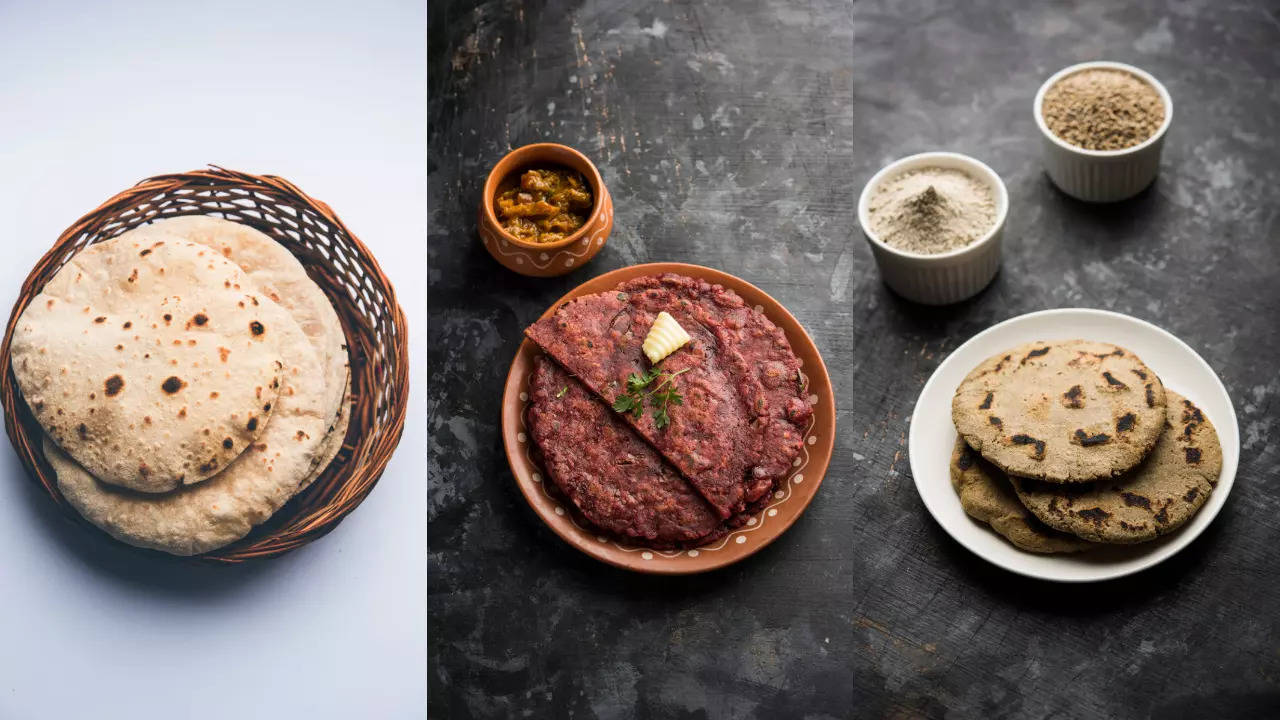Table of Contents

Roti is a staple in the Indian cuisine and can be enjoyed for all the three meals of the day. But it has a special in the breakfast menu. This flatbread can be paired with numerous side dishes like vegetables, dals or curries and in India you can find rotis made with a variety of flours such as wheat, ragi and jowar. But have you ever thought which one of these is the healthiest for you? Let’s explore the nutritional aspects of ragi, jowar and wheat rotis to determine which is the healthiest option for breakfast.
Also Read: Bengaluru To Kolkata, Actor Ashish Vidyarthi Recommends His Best Eating Spots Across India
Ragi Roti
Ragi, also known as finger millet, is a nutrient-dense grain packed with essential nutrients like calcium, iron, and dietary fibre. Adding ragi rotis to your breakfast helps to manage weight, heart health and blood sugar levels. However, excessive consumption of ragi may cause issues for those with kidney stones due to its high calcium content.
Jowar Roti
Jowar or sorghum, is another nutritious grain that is naturally gluten-free, making it a popular choice for those with gluten intolerance or celiac disease. It is rich in dietary fibre, protein and essential nutrients like iron and calcium. Adding this millet into the diet helps in healthy weight loss.
Wheat Roti
Wheat, particularly whole wheat, has been a staple in India for years. It is rich in carbohydrates, protein and fibre, and provides essential vitamins and minerals. The fibre in wheat helps lower cholesterol levels, reducing the risk of heart disease.
Ragi vs. Jowar vs. Wheat Roti: Which Is The Healthiest?
When comparing ragi, jowar and wheat rotis, each has unique health benefits. Ragi stands out for its high calcium, iron and fibre content, which are beneficial for blood sugar control, heart health and weight loss. Jowar is also rich in fibre and antioxidants, making it excellent for digestion, heart health and a great option for those with gluten intolerance. Wheat, while rich in fibre and nutrients, provides energy and supports heart health, but it contains gluten, making it unsuitable for those with gluten sensitivities.
In terms of gluten content, both ragi and jowar are gluten-free, making them ideal choices for people with gluten intolerance or celiac disease. On the other hand, wheat contains gluten, which can be problematic for individuals with gluten sensitivity.
For weight loss, ragi and jowar are preferable due to their higher fibre content and lower glycemic index compared to wheat. This makes them more effective in supporting weight management and maintaining stable blood sugar levels.
When it comes to choosing the healthiest roti, it largely depends on your dietary needs. If you are gluten intolerant, jowar or ragi rotis are excellent choices. For those focused on weight loss or managing blood sugar levels, ragi stands out as the top option. However, if you are looking for a well-rounded source of fibre and nutrients, whole wheat roti remains a reliable choice. For a more balanced option, you can also consider mixing different flours to create a nutritious roti that combines the benefits of all three grains.

